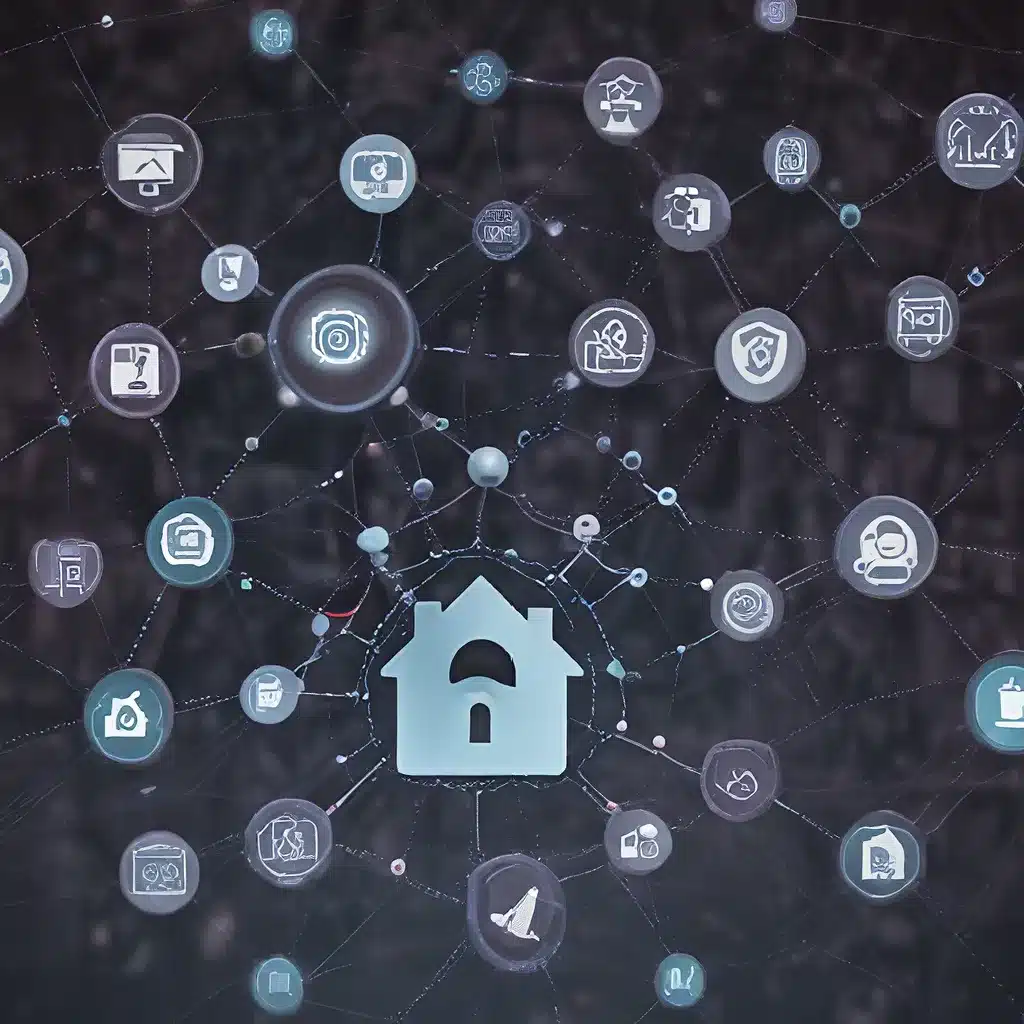
As the Internet of Things (IoT) continues to revolutionize our lives, the security and energy management of these interconnected devices have become paramount concerns. The proliferation of IoT devices, from smart home appliances to industrial automation systems, has ushered in an era of unprecedented convenience and efficiency. However, this increased connectivity also brings with it a host of cybersecurity risks and energy-related challenges that must be addressed.
The Evolving Threat Landscape for IoT Security
The threat landscape for IoT security is rapidly changing and evolving, making it crucial for organizations to take effective measures to mitigate these risks. One of the primary concerns is the emergence of IoT botnets – groups of compromised IoT devices that are controlled by malicious actors. These botnets can be used to launch Distributed Denial of Service (DDoS) attacks, overwhelming servers and disrupting the functionality of various online services. The infamous Mirai botnet, for instance, infected thousands of IoT devices and was responsible for some of the most significant DDoS attacks in history.
Another significant threat is data exfiltration, which involves stealing sensitive information from IoT devices. Since these devices often gather and transmit valuable data, they can become targets for cybercriminals seeking to exploit any vulnerabilities. Maintaining strong security measures is essential to prevent unauthorized access and safeguard user data.
The shadow IoT phenomenon is also a growing concern. This refers to IoT devices that are connected to a network without the IT department’s knowledge or approval. These unmanaged devices can create security vulnerabilities and increase the risk of data breaches. Ensuring complete visibility and control over the IoT infrastructure is crucial to mitigating the risks associated with shadow IoT.
Addressing the Challenges of Firmware Complexity
The challenges posed by the growing complexity of firmware in IoT devices cannot be overlooked. Outdated approaches to firmware engineering can undermine project success and product quality, potentially compromising the security and stability of these devices. However, modern firmware development tools offer essential capabilities for efficient and secure firmware development.
These tools enable developers to evaluate criteria such as supported chip architectures, simulation fidelity, debugging flexibility, and tool ecosystem integration. By utilizing these advanced firmware tools, organizations can ensure the security and reliability of their IoT devices, addressing issues related to RTOS scheduling mechanisms, resource locking, and deadlocks.
Leveraging AI for Robust IoT Security
As the threat landscape for IoT security continues to evolve, artificial intelligence (AI) techniques have emerged as a powerful tool for enhancing the security of IoT devices. AI algorithms can analyze large volumes of data from IoT devices, detect anomalies, and identify potential security breaches in real-time. This automated analysis saves time and resources, enabling organizations to respond to security threats more effectively.
One of the significant advantages of AI in IoT security is its ability to adapt and learn from new threats. As cyber threats become more sophisticated, traditional security measures may not be sufficient. AI algorithms can continuously learn from new data and adapt their models to detect emerging threats, ensuring that the security measures remain effective in the face of a rapidly changing threat landscape.
Additionally, AI can play a crucial role in improving the overall security posture of IoT devices by identifying vulnerabilities. By analyzing data from IoT devices, these technologies can pinpoint potential weaknesses or vulnerabilities in the system, allowing organizations to proactively address any issues before they are exploited by attackers.
Optimizing IoT Device Performance and Energy Efficiency
The integration of AI techniques in IoT devices also offers benefits beyond security, particularly in the realm of resource sharing, inter-core communication, and heat dissipation.
As IoT devices become more complex, ensuring efficient resource allocation and communication between cores is crucial for optimal device performance. AI algorithms can dynamically allocate resources based on device usage patterns, improving overall performance and reducing the risk of resource depletion and system crashes.
Furthermore, AI can play a significant role in managing heat dissipation in IoT devices. As these devices become smaller and more powerful, the challenge of managing heat becomes increasingly important. Overheating can lead to device malfunctions, reduced lifespan, and even security vulnerabilities. AI algorithms can analyze temperature data and dynamically adjust cooling mechanisms to optimize heat dissipation, ensuring the longevity and reliability of IoT devices.
Towards a Secure and Sustainable IoT Ecosystem
The Internet of Things is undoubtedly transforming our world, providing numerous benefits and conveniences. However, the security and energy management of IoT devices are critical challenges that must be addressed to ensure the integrity and sustainability of this rapidly evolving ecosystem.
By leveraging the power of artificial intelligence, organizations can bolster their defenses against IoT security threats and optimize the performance and energy efficiency of their IoT devices. Through the implementation of robust security measures, advanced firmware tools, and AI-driven optimization, we can create a secure and sustainable IoT landscape that continues to drive innovation and progress while safeguarding our data and privacy.
As the sensor networks and IoT technologies continue to advance, it is essential for organizations to stay informed and proactive in their approach to security and energy management. By embracing these emerging trends and best practices, we can ensure that the IoT revolution fulfills its promise of a more connected, efficient, and secure future for all.